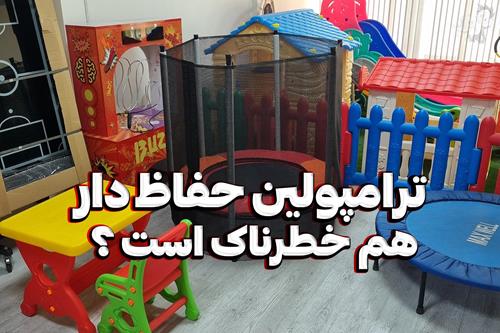



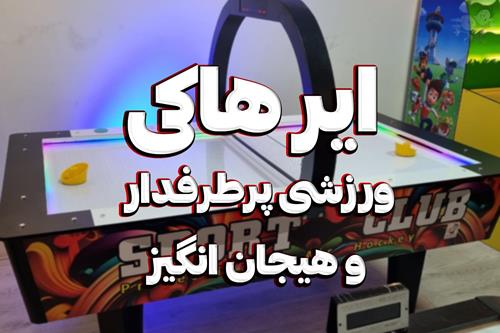
Air hockey on the table is an exciting and fun sport

Introducing the game Hand Speed or Handix

The prominent role of video game consoles in the evolution of amusement parks

Augmented reality in the city of modern games

Park and outdoor products - beauty, safety and entertainment in the field of playground equipment

New playground equipment, a look at the latest technologies in 2024

Kindergarten teacher training complete guide
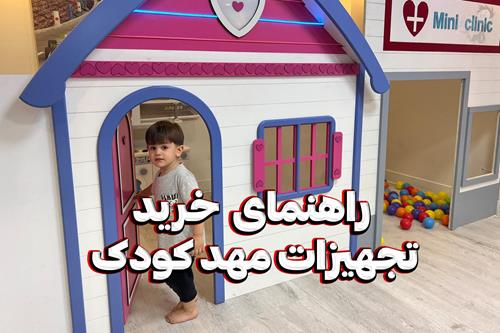
Kindergarten equipment is a complete guide to providing a safe and educational environment for children
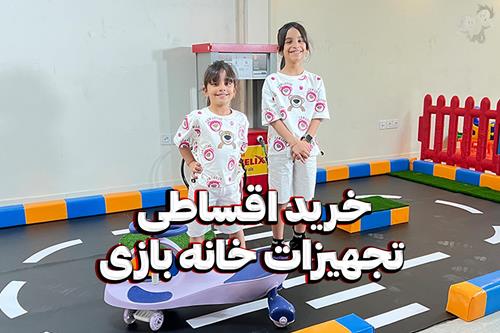
Installment purchase of playhouse and kindergarten equipment, advantages and disadvantages
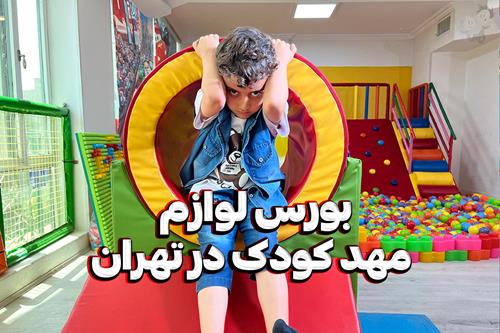
Kindergarten supplies exchange in Tehran

Kindergarten equipment and supplies
How to help toddler constipation
no equivalent
Toddler constipation can cause a lot of pain and discomfort for your child. These expert-approved tips can help get things moving again.

Toddlers typically have at least one bowel movement per day, although some healthy children have bowel movements every few days. "Hard, painful, or very large stools may indicate constipation—a common condition that is often mistaken for constipation," says Steven Hodges, MD, a pediatric urologist at Wake Forest University School of Medicine and co-author of "There are no accidents, no bedwetting, and no accidents." It is understood. It's your fault
Keep reading to learn more about why some babies become constipated, along with tips for helping a constipated toddler.
Is my toddler constipated?
Want to decide if your toddler is constipated? Dr. Hodges says that because stool schedules vary so much, the appearance of your baby's stools is more important than the frequency. Here are some common symptoms of constipation in toddlers.
fewer than three bowel movements per week (although this is normal for some children)
dry, hard
stools bowel movements that are difficult to pass bowel movements
incontinence
loss of appetite
bloating
painful bowel movements
fluid stains in stools in underwear; This means that stool may be backed up in the rectum,
resisting the urge to use the toilet. According to the American Academy of Pediatrics (AAP), signs include crossing the legs, making drawn faces, squeezing the hips, and twisting the body.
Bloody stools
If your child's constipation lasts for at least 2 weeks or you notice bloody stools, anal fissures, fever, weight loss, poor eating, vomiting, or other worrisome symptoms, see your pediatrician. The doctor may perform medical tests or X-rays before deciding on a course of treatment.
What causes constipation in toddlers?
Cow's milk intolerance is the most common cause of infant constipation. If digestive problems persist into childhood, experts may blame insufficient dietary fiber, exercise, or water intake. In fact, any change in diet—including the introduction of dairy products or other new foods—can support a toddler. Excessively processed foods may also be to blame.
Constipation in toddlers can also be caused by refusing to use the bathroom. Children may poop if they can't tire of playing (especially at the beginning of toilet training), if they are wary of public restrooms, or if they are scared of the toilet. The journal Pediatrics once reported that a 3-year-old boy became severely constipated after seeing a TV commercial in which the toilet bowl had turned into a monster and the toilet seat had a punched mouth. Along these lines, some children are so constipated that every bowel movement is painful—and as a result, they avoid going at all, which makes the situation worse.
Related: Top teaching tips from experts and parents
Constipation attacks can be triggered by other stressful events in a child's life, such as the birth of a sibling, parental conflict, or early toilet training. Toddlers may also be supported by unusual conditions such as spinal defects, celiac disease (an autoimmune disorder caused by eating gluten and similar proteins), lead poisoning, or thyroid problems. Finally, certain illnesses or medications can also cause constipation in toddlers.
Natural Remedies for Toddler Constipation
If your toddler is supportive, you can often relieve constipation symptoms with natural constipation remedies.
Change Your Diet
Looking for the best foods for toddler constipation? Eating fiber can help keep your child's digestive system healthy, and many American children don't get enough of it. But interestingly, changing the child's diet does not play a role in the treatment of constipation as you might think. Dinesh Pashankar, a pediatric gastroenterologist at Yale School of Medicine, says that serving high-fiber foods like prunes or raisins can certainly help a child with a temporary stool problem, but it hasn't been shown to be that beneficial. Children who have a serious and chronic condition. However, it is worth eating once, so include plenty of fruits, vegetables, whole grains and beans in your child's diet.
The AAP recommends that toddlers eat "a daily amount of fiber equal to their age plus 5 grams of fiber." Also, limit processed foods as much as possible to relieve your toddler's constipation.
Stay hydrated
Staying hydrated helps the intestines and bowels move things along. Give your child plenty of fluids daily to encourage healthy bowel habits.
Go potty regularly
Is your child too busy to use the toilet? Set aside several times a day to use the toilet, especially after meals. Ask your child to sit for about 10 minutes at a time. Also remind them to have a bowel movement whenever they feel like it.
Encourage movement
A 2016 study in the journal Gastroenterology found that kids with constipation may benefit from something you probably haven't tried: exercise. Researchers looked at 53 children between the ages of 5 and 16 and treated their constipation with toilet training, education and laxatives. Meanwhile, 27 of these children also received physical therapy. After 6 months, 92 percent of the children who received physical therapy no longer had functional constipation (which is caused by psychological or neurological issues), compared to 63 percent of the control group.
As the study's lead author Marieke Van Englenburg explained, "Effective, voluntary and involuntary contraction and relaxation must be present when urinating or defecating on the toilet to prevent inefficient urination or constipation."
According to Dr. Hodges, "Any type of physical activity helps the colon move things forward, so it's important to find activities that your child enjoys." She suggests the following exercises that toddlers can do at home (daily, ideally) to help relieve constipation symptoms. They may answer your question about how to get your toddler to poop when he's constipated!
Related: How To Cope With Potty's Educational Regression
Frog Squat. This exercise mimics squatting, which is great for using the toilet, stretching the pelvic floor muscles in preparation for defecating and urinating. Have your child squat on the floor with their legs and knees wide apart and their heels and hands on the floor. Ask your child to look up as if he were a frog looking for a fly. Now, ask them to take deep breaths and wait patiently for the flies to come. This position should be maintained for 10 to 15 seconds, five times.
Invisible Seat This exercise strengthens the back muscles and helps the child keep their spine straight when leaning forward on the toilet. This exercise also stretches the pelvic muscles, which become tight from holding in urine and stool and spending time playing video games while lying down. Teach your child to pretend to sit down in a chair, with feet shoulder-width apart, weight in heels, and hands reaching overhead. Think chair pose from yoga! The goal is to have your child do ten to fifteen repetitions, holding each time for five seconds, twice a day.
What to give a toddler for constipation
Always check with your pediatrician before starting any toddler constipation medicine, as they may want to run some tests beforehand. Here are some common tactics your pediatrician may recommend depending on your child's condition.
Laxatives
Treating a child's constipation may begin with "purging," and this initial process of relieving constipation can take several weeks. The goal is to gradually get rid of the stone-hard stool that has accumulated in the large intestine. Your child's doctor may recommend treatment with laxatives such as Miralax or Milk of Magnesia.
Unfortunately, many toddlers with chronic constipation require more than two months of intensive laxative therapy to achieve results. The AAP emphasizes that you should never give a child laxatives without a doctor's approval.
enema
In rare cases, laxatives don't help enough and the child may need an endoscopy, in which a soft scope is inserted through the rectum into the colon and the doctor breaks it open and removes stool. This procedure is usually performed by a pediatric gastroenterologist while the child is under sedation. In general, pediatricians recommend at least three months of continuous medication, such as a low daily dose of a laxative, after a cleanse.
Author and translator: Ali Asghar Alizadeh
Source of website www.parents.com




 Category
Category
